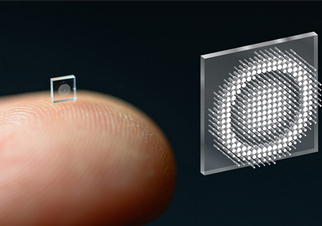Princeton University and the University of Washington researchers have created an imaging system the size of a coarse grain of salt. It is based on a metasurface with 1.6 million cylindrical posts and functions similarly to a camera sensor. Each post functions as an optical antenna, receiving light to form the optical wavefront, and then developing a high-quality picture in full colour using AI algorithms. Traditional cameras employ a sophisticated set of plastic and glass lenses to bend light onto a sensor, which transmits impulses electronically. The new method is based on metasurface, which is a thin layer made up of individual microscopic parts designed to refract light in any desired direction.
Returning to the camera, this metasurface, and its cylindrical posts, the novelty lies in designing the right tube design and signal processing method that can create an actual image. Instead of operating like a laser, which created hazy, distorted pictures with a limited field of vision, the metasurface camera was able to record a full-color snapshot. The primary use for this new sort of camera will be medical: robots will be able to perform minimally invasive endoscopy to identify and cure ailments.
Because the metasurface is made of silicon nitride, it can be mass manufactured fast and at a cheaper cost than lenses for ordinary cameras. This is the first time that researchers have adopted a system in which optical technology is used in the front end and neural processing is used in the back end. According to experts, this innovation will pave the way for “totally alternative ways of manufacturing gadgets in the future.”

